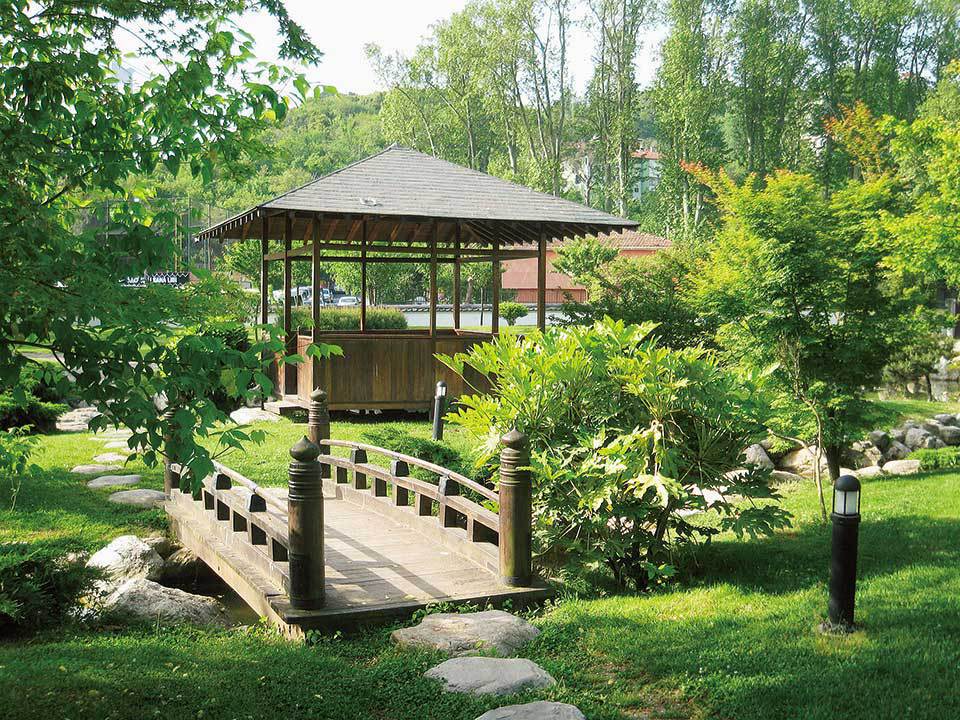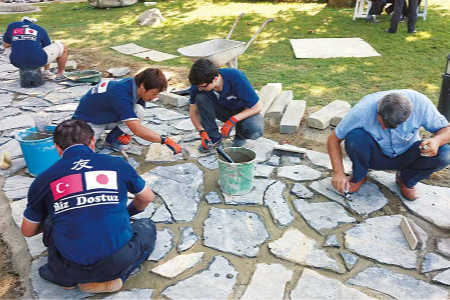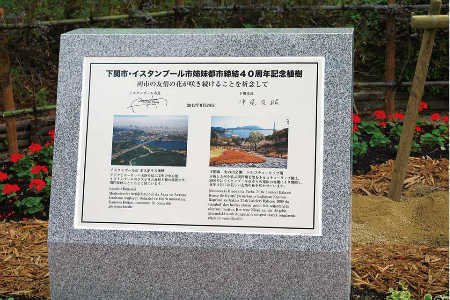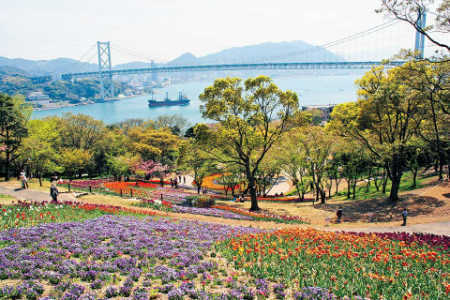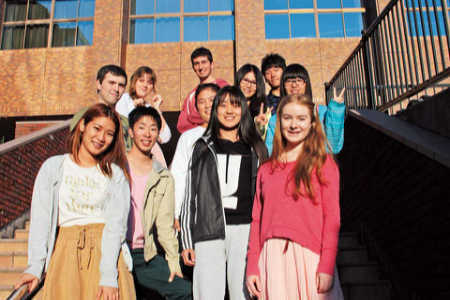The Baltalimani Japanese Garden in Istanbul, completed in 2003, was built with all-out cooperation from the city of Shimonoseki in Japan.
Official exchanges between Istanbul and Shimonoseki were started in 1968 at the suggestion of the mayor of Istanbul. Both cities are located facing major straits: Istanbul faces the Bosphorus, and Shimonoseki faces the Kanmon Straits (Straits of Shimonoseki), and based on this similarity, they became sister cities.
Over the years the two cities have had numerous mutual visits by their mayors and other officeholders, and the Turkish ambassador to Japan has visited Shimonoseki.
The Baltalimani Japanese Garden was built to mark the 30th anniversary of the sister-city relationship. Shimonoseki provided extensive support for the project, including the dispatch of technical experts. It is an authentic example of what is called the chisen-kaiyu style of Japanese garden, featuring a path around a pond, along with a rock garden, teahouse, nagayamon (gate in an extended wall), and arched bridge.
The two cities joined hands in the garden construction project. A Shimonoseki firm provided the design, and the experts from Japan procured all the necessary materials, such as wood and stone, and plants, such as pine and maple trees, from local sources. The construction and processing work was conducted in collaboration with the staff on the Turkish side. Kazuyoshi Mori, president of the Shimonoseki Landscaping Club, provided on-site technical guidance. He declares, “I found that many Turkish people like Japan. They’re also diligent, and we worked together as a team from morning to evening.”
In 2007, as an expression of thanks for Shimonoseki’s assistance in creating the Baltalimani Japanese Garden, Istanbul sent the city 50,000 tulip bulbs (the tulip is native to Turkey). These were planted in what is now the Hinoyama Park Turkish Tulip Garden, and many people come to see them in bloom.
This year Turkey holds the Group of 20 presidency and is hosting the G20 summit and other events. In this connection, Istanbul, intending to invite visiting dignitaries to the Baltalimani garden, asked Shimonoseki for help in renovating it. In response to this request, experts from Shimonoseki once again went to Istanbul, where they assisted in a large-scale renovation project undertaken with all-out cooperation from the Turkish side. Behind-the-scenes support for the project came from former Turkish students at Shimonoseki City University. With support from a local bank, the university has been hosting students from Turkey for one-year stays since 1994. Former participants in this program answered the call for interpreters to provide essential assistance for the joint endeavor. Mori recalls, “They served as bridges between Japan and Turkey, grasping our ideas and conveying them appropriately to the local staff.” Mori expresses confidence in the results of their work: “The renovation work is due to be completed in November, and I hope many people will come to see the reborn garden.”
The arched bridge and azumaya pavilion were made with locally procured lumber and put together by Turkish workmen.
Experts wearing uniforms with the Japanese and Turkish flags work on this year’s renovation project.
A monument to the friendship between Istanbul and Shimonoseki has been erected within the garden.
Tulips donated to Shimonoseki by Istanbul are now growing in Hinoyama Park. In response to a request from the Turkish side, they were planted on a hillside area with a view of the Kanmon Straits.































































































































